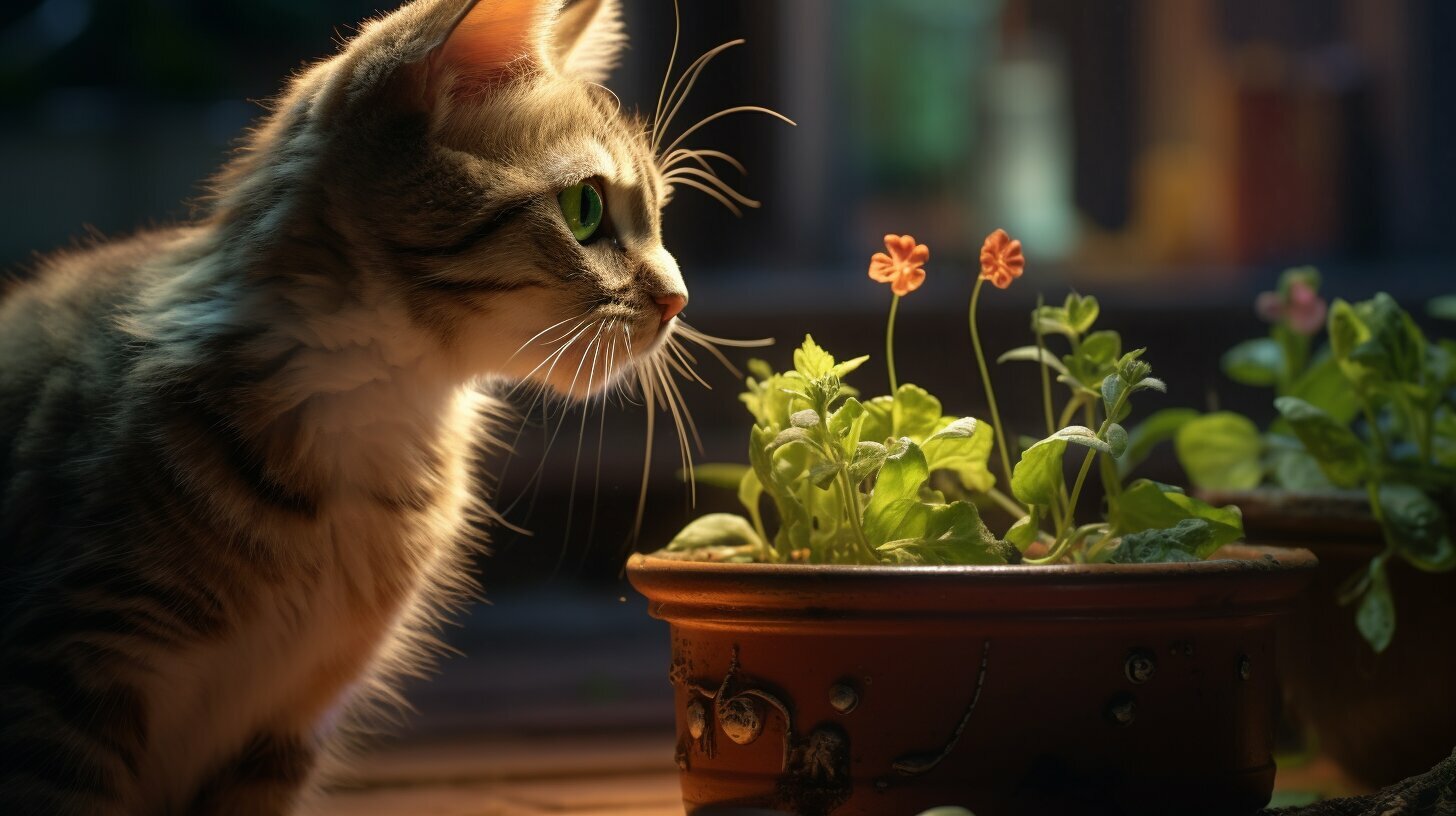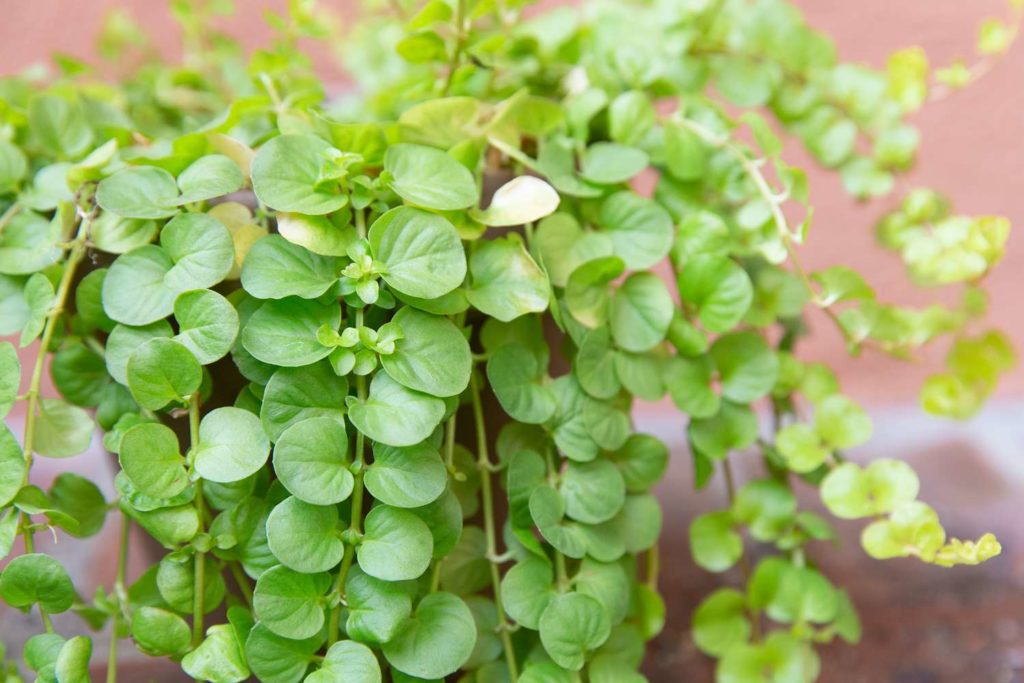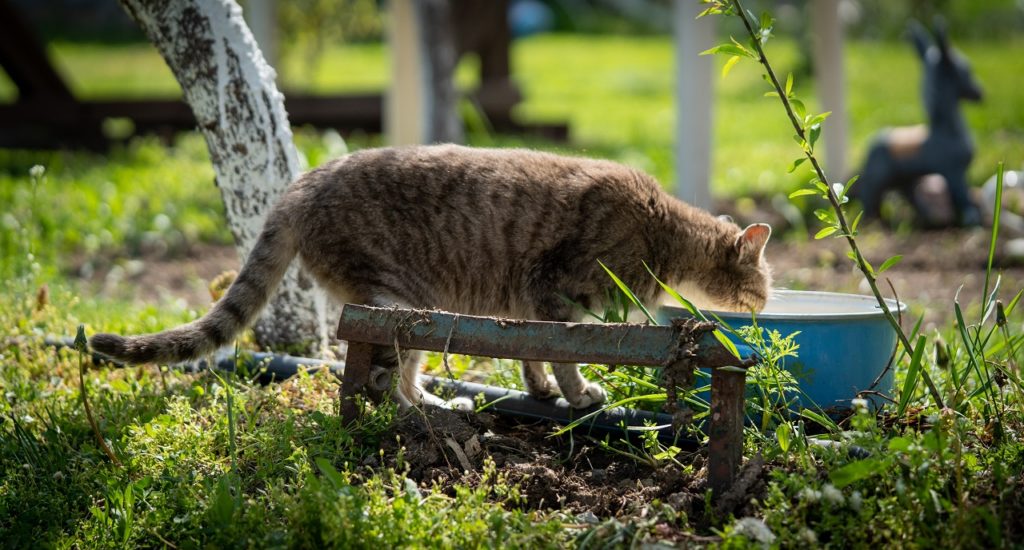Welcome to our article on the potential dangers of Creeping Jenny for feline health. If you’re a cat owner, you may be wondering: is Creeping Jenny toxic to cats? We’re here to answer that question and provide you with all the information you need to ensure your furry friend stays safe around this plant.
What is Creeping Jenny?
Creeping Jenny, also known as Lysimachia nummularia, is a low-growing perennial plant with vibrant yellow-green leaves and small, yellow flowers. It is a member of the Primulaceae family and is native to Europe, but can now be found in North America and other parts of the world.
This plant is often used as a ground cover due to its ability to spread rapidly and tolerate most soil types. It is also popular as a hanging plant, as it can drape down walls and pots with ease. Aside from its aesthetic appeal, Creeping Jenny is also used in traditional medicine for its alleged anti-inflammatory and analgesic properties.
Although it is often called Creeping Charlie, that name is also used for another plant species, Glechoma hederacea, which is a member of the mint family.
The Effects of Creeping Jenny on Cats
While Creeping Jenny may be a popular plant for gardens and landscaping, it can be harmful to feline health. If ingested, the plant can cause a range of symptoms that can impact a cat’s well-being. It’s important to be aware of the potential risks and take steps to keep cats away from this plant.
Some of the common effects of Creeping Jenny on cats include vomiting and diarrhea. In more severe cases, ingestion can cause lethargy, loss of appetite, and even liver damage.
The Risk of Creeping Jenny Ingestion
Cats may be attracted to Creeping Jenny due to its bright yellow color and low-lying habit, often found in garden beds. The plant is deemed toxic to felines due to the presence of several harmful compounds, including alkaloids, flavonoids, and saponins. Even small amounts of the plant can cause issues.
It’s essential to take steps to keep cats away from this plant. This may include removing it from your garden or keeping it in enclosed areas where cats can’t access it.
Recognizing Symptoms of Creeping Jenny Ingestion
If you suspect your cat has ingested Creeping Jenny, it’s crucial to look for signs of poisoning. These may include:
- Vomiting and diarrhea
- Lethargy
- Loss of appetite
- Jaundice (yellowing of the eyes and gums)
- Uncoordinated movements or seizures
If you notice any of these symptoms, it’s essential to seek veterinary care immediately. Prompt treatment can help prevent more severe consequences of ingestion and improve the likelihood of a full recovery.
Toxicity of Creeping Jenny to Cats
Creeping Jenny may be a beautiful and easy-to-grow plant, but it can be toxic to cats if ingested in large amounts. The plant contains saponins, which can cause vomiting, diarrhea, and other gastrointestinal issues in felines. The level of toxicity can vary depending on how much of the plant the cat has eaten and how quickly it receives treatment.
If your cat has ingested creeping jenny, it’s essential to monitor its behavior and look out for any signs of poisoning. Symptoms of creeping jenny poisoning include lethargy, loss of appetite, and disorientation. If you suspect that your cat has ingested this plant, take it to the vet immediately.
| Plant Part | Toxicity Level |
|---|---|
| Leaves/Stems | Mild to Moderate |
| Seeds/Flowers | Moderate to Severe |
The amount of creeping jenny that is potentially toxic to your cat depends on its body weight and the part of the plant ingested. While small amounts may not cause significant harm, it’s always better to be safe than sorry and avoid exposing your cat to this plant.
If you have creeping jenny in your garden or home, make sure it is out of reach of your cat. If you suspect that your cat has ingested it, seek veterinary care immediately. Prompt treatment can save your cat’s life and prevent long-term health consequences.
Other Toxic Plants for Cats
While Creeping Jenny can be hazardous to cats, it’s not the only plant that pet owners should be wary of. Listed below are some other common plants that can be toxic to feline health:
- Lilies
- Azaleas
- Tulips
- Daffodils
- Hyacinths
- Poinsettias
If you have any of these plants in your home or garden, be sure to keep them out of reach of your furry friends. Always supervise your cats when they are outside, as they may come into contact with toxic plants in the neighborhood. Familiarize yourself with the symptoms of poisoning so that you can recognize them if they occur.
Note: This list is not exhaustive, and there may be other plants that are toxic to cats as well. If you are unsure about the safety of a particular plant, it’s best to err on the side of caution and keep it away from your pets.
The Signs of Creeping Jenny Poisoning in Cats
If you suspect that your cat has ingested Creeping Jenny, it is important to know the signs of poisoning. While mild symptoms may include vomiting and diarrhea, more severe cases can lead to seizures and organ failure.
Other signs of poisoning may include:
- Lethargy and weakness
- Difficulty breathing
- Loss of appetite
- Abdominal pain and bloating
- Irregular heartbeat
If you notice any of these symptoms in your cat after exposure to Creeping Jenny, it is important to seek veterinary care immediately. Time is of the essence when it comes to treating the effects of poisoning, and delaying treatment can have serious consequences.
Note: If you suspect your cat has recently ingested Creeping Jenny, try to bring a sample of the plant with you to the veterinarian. This can help them identify the plant and determine the best course of treatment.
Can Cats Eat Creeping Jenny?
No, cats should not eat Creeping Jenny. While it is not considered one of the most toxic plants for cats, it can still cause serious health problems if ingested. As a pet owner, it is important to be aware of the potential risks associated with certain plants and take steps to keep your furry friends safe.
The Effects of Creeping Jenny on Cats
While Creeping Jenny may look harmless, it can be poisonous to cats. Ingesting any part of this plant can cause a range of symptoms that can impact feline health.
Symptoms of Creeping Jenny Poisoning in Cats
If your cat has ingested Creeping Jenny, they may experience vomiting, diarrhea, and a lack of appetite. They may also become lethargic and show signs of abdominal pain. In severe cases, the cat may experience liver damage or even liver failure.
It is important to monitor your cat’s behavior and contact a veterinarian if you suspect they have consumed any amount of Creeping Jenny.
Severity of Creeping Jenny Poisoning in Cats
The severity of the poisoning depends on the amount of the plant consumed, as well as the cat’s age, weight, and overall health. It is crucial to seek veterinary care immediately if you suspect your cat has ingested Creeping Jenny.
Do not wait for symptoms to appear before seeking help, as early intervention can greatly improve the cat’s chances of recovery.
Preventing Creeping Jenny Poisoning in Cats
If you have cats and are worried about the potential toxicity of Creeping Jenny, there are steps you can take to keep your pets safe. Here are some tips for preventing feline poisoning:
- Avoid planting Creeping Jenny in areas where cats have access
- Consider replacing Creeping Jenny with pet-friendly alternatives
- Train your cat to avoid certain plants by using deterrent sprays or creating barriers around them
- Supervise your cat when they are outside and keep them on a leash or inside a secure enclosure
- If you have Creeping Jenny in your home, keep it out of your cat’s reach
- If you suspect your cat has ingested Creeping Jenny, contact a veterinarian immediately
By following these simple steps, you can help protect your furry friends from potential poisoning and ensure their continued health and happiness.
Safe Alternatives to Creeping Jenny
If you’re a cat owner who loves to decorate their home with plants but worries about the potential risks of Creeping Jenny, worry no more. There are plenty of safe alternatives to this plant that you can enjoy without sacrificing on aesthetics.
Golden Creeping Jenny
Golden Creeping Jenny is a common alternative to Creeping Jenny that is safe for cats. It shares similar physical characteristics to the toxic plant, with its vibrant yellow-green leaves that spread quickly. This plant is ideal for container gardening and can thrive in moist soil.
Creeping Thyme
If you’re looking for a fragrant and safe alternative to Creeping Jenny, consider Creeping Thyme. This perennial herb has small, delicate leaves that come in shades of green and purple. It is perfect for borders or between stepping stones and can handle full sun or partial shade.
Creeping Myrtle
Creeping Myrtle, also known as Vinca Minor, is a popular alternative to Creeping Jenny that is safe for cats. This evergreen plant has glossy leaves and violet-blue flowers that bloom in the spring and summer. It is ideal for ground covers or as a trailing plant in a hanging basket.
Spider Plant
If you’re looking for a safe indoor plant that shares the vibrant green color of Creeping Jenny, consider the Spider Plant. This hardy plant has long, slender leaves that arch gracefully and small white flowers that bloom in the summer. It is an excellent air purifier and easy to care for, making it an ideal choice for beginner plant owners.
Frequently Asked Questions (FAQs)
Q: Can dogs also be affected by Creeping Jenny?
A: Yes, dogs can also experience symptoms of poisoning if they ingest Creeping Jenny. It is important to keep all pets away from this plant to ensure their safety.
Q: How quickly do symptoms of Creeping Jenny poisoning appear in cats?
A: Symptoms can appear as quickly as 30 minutes after ingestion, but it can take up to several hours for signs of poisoning to become apparent.
Q: What should I do if I suspect my cat has ingested Creeping Jenny?
A: You should seek veterinary assistance immediately. It is important to act quickly to minimize the potential harm to your cat.
Q: Can cats die from Creeping Jenny poisoning?
A: While it is rare for cats to die from Creeping Jenny poisoning, it is still a serious issue that requires prompt medical attention. Severe cases can result in dehydration and other complications that can be life-threatening.
Conclusion
In conclusion, Creeping Jenny can be toxic to cats if ingested. Its effects can range from mild discomfort to more serious symptoms, such as seizures and kidney failure. As responsible pet owners, it is important to be aware of potentially harmful plants and take steps to protect our furry friends from harm.
If you have Creeping Jenny in your garden or home, ensure it is kept out of reach of your pets. If you suspect your cat has ingested this plant, seek veterinary care immediately. Remember to always prioritize the safety and well-being of your pets.
Frequently Asked Questions (FAQs)
Q: Are other pets, such as dogs, impacted by Creeping Jenny?
A: While cats are more susceptible to the toxic effects of Creeping Jenny, dogs may also experience symptoms if they ingest this plant. It is best to keep all pets away from this potentially harmful plant.
Q: What should I do if I suspect my cat has eaten Creeping Jenny?
A: If you notice any symptoms of Creeping Jenny poisoning in your cat, such as vomiting or diarrhea, seek veterinary care immediately. Your vet will be able to provide the necessary treatment to help your cat recover.
Q: Are there any safe alternatives to Creeping Jenny?
A: Yes, there are several pet-friendly plants that have similar characteristics or uses as Creeping Jenny. Some examples include Baby Tears, Soleirolia soleirolii, and Irish Moss, Sagina subulata.
Q: Can cats eat any part of Creeping Jenny without harm?
A: No, all parts of Creeping Jenny are toxic to cats. It is important to keep this plant away from your pets to prevent any potential harm.


